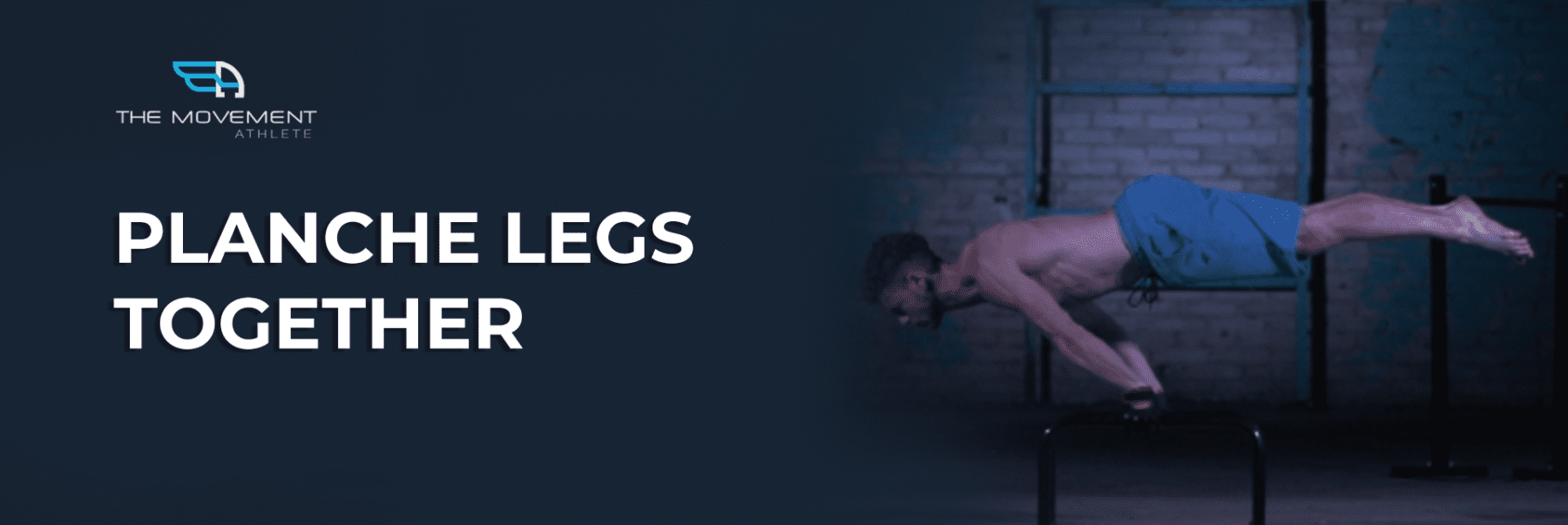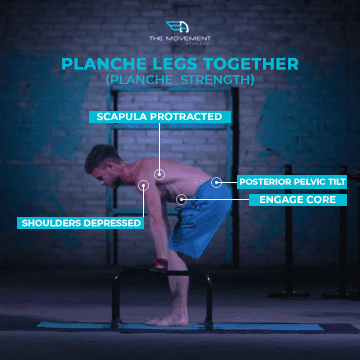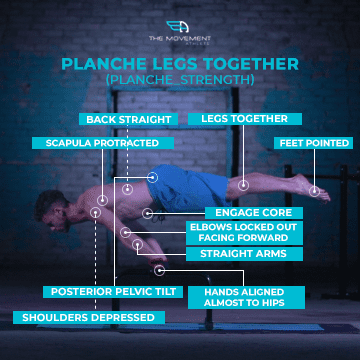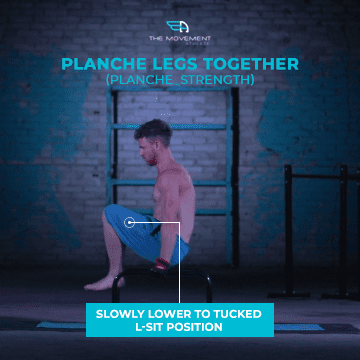
Join the tribe of Movement & Calisthenics Athletes – people just like you that are working with their own body weight to get strength, lose fat build muscle, recover from injuries and live their best lives!
Do you want to set a high-level goal in your calisthenics journey?
The planche is a mesmerizing skill that equates to elite strength, technique, and skill.
It’s a static exercise where you are fully supported by your arms (like in a handstand), but your full body is parallel to the ground which makes this exercise completely more difficult than a handstand.
In order to maintain the balance in this position, you must lean forward making your hands aligned with your hips as your feet are hovering in mid-air.
Contrary to the popular notion that the exercise relies on your core to lift your lower body up, the leaning motion with your shoulders is the key in order to get to and hold the position. But the planche still requires a stronger core, back, and front.
It’s a complete exercise that shows displays phenomenal upper body strength and body control.
If you want to set a goal, you might as well set it high and choose the planche.
HOW TO KNOW WHEN IT’S SAFE TO ATTEMPT?
There’s no other way around it. You must first learn a solid straddle planche. The seemingly minor change in the leg position has a drastic major impact on the difficulty of the exercise. Remember that calisthenics progression works by changing its leverage.
Planche legs together is a high-level skill that requires immense technique and strength. You must first learn the easier variation for faster, safer and better progress.
Summarized Benefits
- Stronger straight arm strength
- Stronger protracted scapula
- Enhanced body control and awareness
- Stronger whole core
- Greater mind-body connection
- Strengthens shoulders
- Better full body-tension
- Opens elite-level skill work such as maltese
- Look freaking cool floating in mid-air!
How to Perform
- Begin with feet flat on the floor, bend forward placing palms on the floor shoulder-width apart.
- Protract scapula and engage core.
- With arms straight and elbows rotated forward, lean forward and push through shoulders. Keep the legs together. Think of a push-up position while leaning forward.
- Slowly raise your lower body until your legs are parallel to the floor.
- Hold for a specified amount of time.
Keep in mind
Scapula protraction
The key to a stronger planche (and proper form at least) is by strengthening your scapula protraction. This means you are able to fully push your body away to the ground to a planche position. If you’re not able to hold a strong scapula protraction, this could possibly mean weaknesses in other parts of your connecting muscles such as the traps, serratus anterior or pecs. Be sure to strengthen every part specific to the goal of planche and your scapulas can be protracted all day long in the planche position.
Straight lower back
Common areas of weakness when holding the planche is in the lower back. This is demonstrated by visibly arching of the lower back or inability to hold the planche position because the lower body is “too heavy”. This could result in a lower back injury if not addressed immediately. Train your lower back specific to planche and use an easier progression where you can hold the correct posterior pelvic tilt and straight back.
Externally rotated elbows and locked out arms
Not locking out the arms is basically cheating. It’s not easy on the joints but it is the proper form of the planche whatever progression you might be using. Rotating the elbows outwards also helps in keeping your arms straight throughout the movement. Keep training basic planche exercises such as planche leans to build stronger joints to hold you in this unique position.
Coaching Pointers
Starting Position:
Scapula protracted
Engage core
Posterior pelvic tilt
Shoulders depressed
Movement Position:
Straight arms
Elbows locked out facing forward
Scapula protracted
Legs together
Feet pointed
Posterior pelvic tilt
Core engaged
Back straight
Shoulders depressed
Hands aligned almost to hips
Finish Position:
Slowly lower to tucked L-sit position


